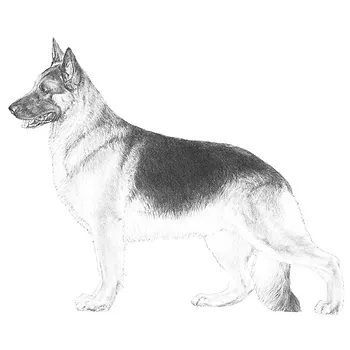Differentiating between the types of German Shepherds in North America is crucial for anyone considering adding one to their family or seeking a working or sport partner. The American show lines, German show lines, and European working lines each possess distinct characteristics, both in appearance and temperament.
American Show Lines:
Referred to as AKC Lines, these dogs are primarily bred for the show ring and adhere to the American Kennel Club standards. Over time, American show lines have diverged from their European counterparts due to differing interpretations of breed standards. The emphasis is on appearance rather than working ability, resulting in dogs with softer temperaments and lower energy levels. While some breeders prioritize temperament and performance titles, many focus solely on conformation showing. Unfortunately, this has led to a decline in working ability within this lineage. Dogs from this bloodline can still make excellent family pets or participate in certain performance events, but they are typically not suited for tasks requiring high drive or protection work.
American “Pet” Lines:
A subset of American show lines, these dogs are often bred by inexperienced individuals for personal reasons, resulting in a lack of health and temperament screening. While some may possess stable temperaments, many suffer from behavioral issues due to poor breeding practices.
German Show Lines:
Also known as “High Lines” or “Sieger Lines,” German show line dogs maintain some working ability due to stringent breeding regulations in Germany. However, the focus remains primarily on conformation, with less emphasis on working traits. While some German show line dogs excel in sports like schutzhund, many only meet minimum requirements for titles and lack true working drive. They typically have a more substantial build and a curved back compared to their American counterparts.
Working Lines:
European working lines, including West German, Czech, East German/DDR, Dutch, and Belgian lines, prioritize working ability above all else. These dogs are bred for traits like drive, courage, intelligence, and sound temperament, making them ideal for various working tasks. While they may vary in appearance, they generally exhibit higher energy levels and stronger characters than show line dogs. Physical soundness and health are also essential considerations in breeding programs for working lines.
Maintaining the original working characteristics of the German Shepherd breed is crucial for its longevity and quality. Working line breeders focus on preserving these traits through careful selection of breeding stock and adherence to working standards.
In conclusion, understanding the distinctions between American show lines, German show lines, and European working lines is essential for selecting the most suitable German Shepherd for your needs, whether as a family companion, sport partner, or working dog. Each lineage offers unique traits and characteristics, and choosing the right one requires thorough research and consideration.

Leave a Reply